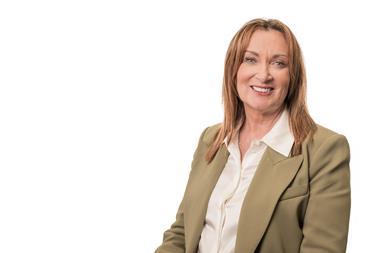Despite the body-blows dealt to the profession’s high street presence by the web, brokers are fighting back by doing what they do best – helping customers find the right cover
The high street broker, where everybody once went to get insurance, has been beaten into submission. The phone and internet delivered the knockout blow. A haymaker came from Direct Line and its clones, cherry-picking the easiest risks. There were jabs from online comparison sites, an uppercut from search engines and a right hook from cheap, day-time TV ads. And even the regulator put the boot in.
The failed Insurance Brokers Registration Council was out for the count at just 21 years old in 1998, leaving brokers and insurers to fight it out in an unlicensed bout. And, more recently, regulation has flipped to the other extreme, raining down body blows. Biba executive director Graeme Trudgill says that, since its inception five years ago, the FCA has issued 120 new papers that potentially affected brokers. That’s a brutal onslaught. “This is too much for a sector without systemic risk and can hinder, not help, the ultimate customer outcome,” Trudgill says.
Many brokers threw in the towel. Buy a motor policy or standard household cover and you’ll likely be told the broker has no recommendation, has done no assessment of suitability and that it is for the customer to decide if the policy is appropriate. If they want cheap, that’s what they’ll get, whether or not the policy is any good, the exclusions too wide and claims service dire.
Liz Foster, board member of the CII Broking Faculty and managing director of West Midlands broker Ingram, Hawkins & Nock, says: “Many members of the public are increasingly used to ‘self-service’ online in all areas of their lives. It’s easy to arrange travel, shopping, entertainment and day-to-day purchases from an armchair. Against this backdrop it is easy to understand why individuals and companies question the value of and need for an insurance broker.”
According to Biba, just 34% of personal lines policies are sold through brokers.
But there are still professional brokers out there prepared to stand and fight, even in personal lines. The CII has 3,072 Chartered brokers. “A Chartered Insurance Broker, as a firm, has a minimum of 90% of its advising staff as members of the CII and a minimum of 25% of its board, or divisional executive, who are Chartered Insurance Brokers in their own right,” says Foster.
“To ensure that the client, whether an individual or a business, is fully protected, there must be an understanding of the possible risks – an insurance broker will ask the appropriate questions to assess those risks. It is also incumbent upon a broker to have a deep knowledge of the products available across the market and the nuances of those products.”
Understanding nuances is a hard-to-define skill, but pretty much sums up what a broker brings to the party. It’s not just about understanding risk, insurers, policy terms and claims, it’s about those nuances.
“Putting together knowledge of the client, and the risks faced, with that deep product knowledge enables a broker to advise on the appropriate policies to purchase to adequately protect against the risks. Should the client be unlucky enough to suffer a claim, the cover will be in place and will respond properly,” says Foster.
Non-standard business
In niche, expert markets, that is crucial. Christopher Croft, chief executive of the London & International Insurance Brokers’ Association (LIIBA), defends brokers pugnatiously. LIIBA’s members account for about 95% of the London Market’s business, placing $67bn of premiums there and another $24bn globally. Ranging from small independents to major international brokers, they specialise in bringing challenging, complex and non-standard business to London.
“The structuring and placing of insurance is only part of a Lloyd’s broker’s role,” Croft says. “Our members provide in-depth expertise to help clients manage risk and identify where purchasing insurance is the best approach to its mitigation. That is why brokers employ engineers, security specialists, experts in the prevention of cyber crime and all sorts of other professionals. They also provide extensive ‘after-sales care’ to ensure claims are dealt with swiftly and in the client’s best interests; and to help clients contain the impact of any incident.”
Another broker fighting its corner is Aon Benfield, the world’s biggest reinsurance broker. With just 8% of world insurance premiums – or £175bn – reinsured, only experts step into this ring.
Transferring the risk
Dominic Christian, global chairman of Aon Benfield, says it employs 500 scientists, such as seismologists and hydrologists, plus mathematicians and actuaries. “It’s a team-based game,” he says. And the company has a financial wing for transferring some risks to financial markets, such as through catastrophe bonds.
“Reinsurance brokers do three things. We understand a client’s risks, we transfer those risks and we try to help the client grow,” he says.
Every broker can make that difference too, whether their client is a giant multinational, a small business or a jobbing self-employed worker. Even in personal lines, brokers can be crucial. Biba’s hotline, to help people who cannot find cover to get expert broker advice, takes 6,000 calls and gets 40,000 website hits per month.
Trudgill says: “From businesses struggling to access flood cover or organisations using drones, to small committees or charities putting on a local event, there are many customers that simply don’t fit in a ‘box’ and can turn to a broker to help. For individuals the same is true. People with cancer or other serious conditions sometimes find it challenging to get travel insurance.”
“Brokers have evolved to help customers in the way they want or need to access insurance. The market is different to 10 years ago and one size definitely does not fit all. Some clients prefer the reassurance of a personal approach, while for others the speed and convenience of a digital offering meets their needs with the reassurance that there is expertise recommending the cover behind the technology,” says Trudgill.
He’s firmly in the brokers’ corner. Seconds out. Round two: “Be assured, brokers are responding to the needs of customers and will continue to do so,” Trudgill says.
CASE STUDY
How a broker turned fleet losses around
Managed IT services provider Simply Outsourced had a problem. Its drivers were driving insurers mad. In 2014, it had a fleet loss ratio of close to 300%. In 2015, its insurer, Aviva, initially declined to offer renewal terms. Other insurers weren’t queuing up to offer cover.
Luckily, the firm had a broker, Yutree, to help steer them down the right road. Yutree flagged up several risk management improvements to change the risk presented to the insurance market. This included:
• a “two strikes and you’re out” policy that resulted in three drivers collecting their P45s;
• switching the fleet from vans to cars wherever possible so drivers took more pride in their vehicle;
• trackers and telematics installed in all vehicles;
• cameras in vehicles (both facing forward and facing the driver); and
• driver training and licence checking.
That alone might not have been enough.
Yutree also brought to bear its strong working relationship with Aviva to convince the reluctant insurer that the remedial action would return the fleet to profit.
In the first 12 months after the changes, the fleet improved to a loss ratio below 80%. Yutree continued working with the client to refine its fleet risk management and had continuous dialogue with Aviva, including two risk management surveys throughout the year, where the insurer observed how well the fleet management had transformed the risk.
The 2016/17 policy year resulted in a low claims rebate as the firm’s loss ratio fell below 40%. Simply Outsourced’s fleet premiums are now reducing..











































No comments yet